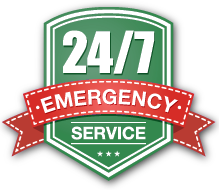Backflow is a term we are intimately familiar with in the plumbing industry, but it may not be something you are currently aware of. Water in your home plumbing system should only ever be flowing in one direction. When it doesn’t, problems start occurring. Today we are going to be talking about backflow, while learning about why it happens and how to prevent it.
Basics of Backflow
Backflow can occur for a number of reasons including back siphonage, and back pressure. Back pressure occurs when the pressure of the plumbing system has been increased and is now higher than that of the supply of water. This often occurs in unvented heating systems. Back siphonage occurs when pressure of the municipal water source drops below that of your home’s plumbing system. This could be caused by a broken water main, an open fire hydrant, or a failure at the pumping station.
Problems with Backflow
At this point, you may be wondering to yourself, what is the big deal? Who cares if the flow of water in my plumbing system is reversed for a moment or two? Well, if you are concerned with your health and wellbeing, you should care! Backflow can cause the supply of fresh water to the home to be contaminated by wastewater. Contaminated water can cause illness or even death. So clearly, you want to prevent backflow, so how do you do that?
Backflow Prevention
There are six basic types of devices which can prevent backflow. These devices are of varying complexity. They include air gaps, barometric loops, vacuum breakers, double check valves, and more. If you are worried about backflow prevention, or you believe you have experienced backflow in your home plumbing system, you should contact us immediately. Backflow is a problem that should be addressed by a professional plumber only.



